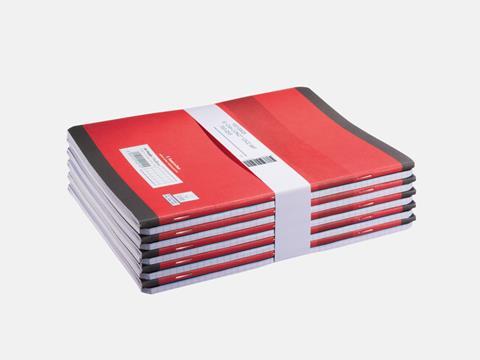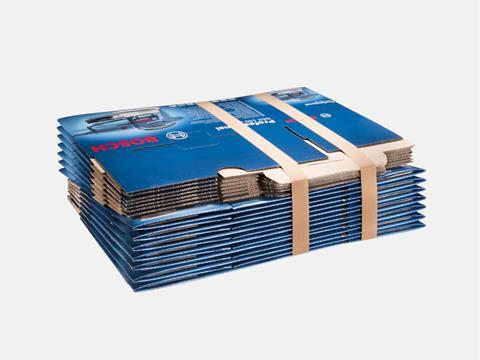
Can banding serve as a viable alternative to traditionally resource-intensive labelling and bundling techniques, and in what ways is it more efficient than traditional options? Thomas Weber, content manager at ATS-Tanner, gives us his thoughts.
For readers who may be unaware of banding and its key attributes – please could you give us an overview?
Banding is an automated packaging process in which one or more products are wrapped in a thin, printed, or plain band of paper or film. Banding can serve several functions: Bundling, securing for transportation, sealing, labeling with pre-printed or just-in-time information, or point-of-sale advertising.
Adhesive-free banding is the standard for environmentally friendly and efficient packaging and the resource-saving alternative to shrink film, bag packaging, strapping or cardboard sleeves. And thanks to just-in-time printing, it eliminates the need for additional labeling.
Banding machines are available from handy, transportable table models to complex systems that are fully integrated into production lines. They are therefore suitable for a wide range of applications, production volumes and company sizes.
Sustainability is, of course, the driver of much of the innovation we see in the packaging industry nowadays. In your view, what are some of the key advantages of banding in this context?
Banding reduces packaging to a minimum. Banding also simplifies waste separation and recycling because no glue or additional labels are used and the bands can be easily separated from the product by hand. Paper bands can be recycled in established cycles and contain recycled paper.
Film bands are made from high-quality, easily recyclable mono-material and can also be made from PCR. What’s more, banding machines with ultrasonic sealing technology are the most energy-efficient, low-maintenance, and durable packaging machines available.

ATS-Tanner recently launched a new innovation: a banding paper named TruePaper. Please could you let us know more? What motivated this creation, and what kinds of products is it most suited to?
TruePaper is an environmentally friendly paper band that contains a water-based bonding agent that can be sealed with ultrasonic and heatseal technology. TruePaper consists of optionally virgin or more than 50% recycled fibers. It can be marked with recycling code 22 (PAP) and be recycled in the normal paper cycle.
The main drivers behind the development of TruePaper are the sustainability strategies and goals of our customers, the legal bans on single-use plastic in a growing number of countries, the increasingly important implementation of the circular economy - and last but not least, our own motivation and promise to always offer our customers the best packaging solution.
TruePaper is very versatile. We have extremely strong paper qualities with which even heavy products such as stacks of corrugated cardboard can be securely bundled. It is also ideal for the environmentally friendly packaging of all types of printed products made from paper and paperboard. However, many customers also use it for food packaging - from bundling and labeling fresh, unpackaged fruit and vegetables to sealing and labeling ready meals in trays.

Let’s get back to the overall concept of banding now. In terms of the printing industry, what are your thoughts on the potential benefits that banding can bring?
Banding protects surfaces and edges, minimizes packaging, and can replace plastic with paper. Banding machines often perform additional steps such as automatic stacking, aligning and pressing, or just-in-time printing of variable data directly onto the band, eliminating the need for additional labeling. Banding can play a critical role in production automation. This means less manual labor, higher productivity, and error-free production.
Likewise, for the corrugated cardboard industry, could you give us your thoughts on how banding compared to traditional alternatives?
Corrugated cardboard is usually packaged with narrow strapping bands - an inexpensive packaging solution only at first glance. However, products with damaged surfaces or edges and manual work steps (e.g. pressing, placing, stacking, turning or attaching edge protectors) make production more expensive and have a negative impact on customer satisfaction.
Gentle strapping protects the surfaces and edges of the top and bottom products without the need for additional edge protectors. This prevents rejects and overproduction. On the other hand, banding machines can take over the above-mentioned manual work steps if required, thus helping to automate and increase production.
















